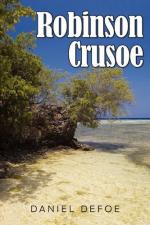The talents and perseverance of De Foe began now to be properly estimated, and as a firm supporter of the administration, he was sent by Lord Godolphin to Scotland, on an errand which, as he says, was far from being unfit for a sovereign to direct, or an honest man to perform. His knowledge of commerce and revenue, his powers of insinuation, and, above all, his readiness of pen, were deemed of no small utility in promoting the union of the two kingdoms; of which he wrote an able history in 1709, with two dedications, one to the Queen, and another to the Duke of Queensbury. Soon afterwards he unhappily, by some equivocal writings, rendered himself suspected by both parties, so that he once more retired to Newington, in hopes of spending the remainder of his days in peace. His pension being withdrawn, and wearied with politics, he began to compose works of a different kind.—The year 1715 may therefore be regarded as the period of De Foe’s political life. Faction henceforth found other advocates, and parties procured other writers to disseminate their suggestions, and to propagate their falsehoods.
In 1715 De Foe published the “Family Instructor;” a work inculcating the domestic duties in a lively manner, by narration and dialogue, and displaying much knowledge of life in the middle ranks of society. “Religious Courtship” also appeared soon after, which, like the “Family Instructor,” is eminently religious and moral in its tendency, and strongly impresses on the mind that spirit of sobriety and private devotion for which the dissenters have generally been distinguished. The most celebrated of all his works, “The Life and Adventures of Robinson Crusoe,” appeared in 1719. This work has passed through numerous editions, and been translated into almost all modern languages. The great invention which is displayed in it, the variety of incidents and circumstances which it contains, related in the most easy and natural manner, together with the excellency of the moral and religious reflections, render it a performance of very superior and uncommon merit, and one of the most interesting works that ever appeared. It is strongly recommended by Rosseau as a book admirably calculated to promote the purposes of natural education; and Dr. Blair says, “No fiction, in any language, was ever better supported than the Adventures of Robinson Crusoe. While it is carried on with that appearance of truth and simplicity, which takes a strong hold of the imagination of all readers, it suggests, at the same time, very useful instruction; by showing how much the native powers of man may be exerted for surmounting the difficulties of any external situation.” It has been pretended, that De Foe surreptitiously appropriated the papers of Alexander Selkirk, a Scotch mariner, who lived four years alone on the island of Juan Fernandez, and a sketch of whose story had before appeared in the voyage of Captain Woodes Rogers. But this charge, though repeatedly and confidently brought,




